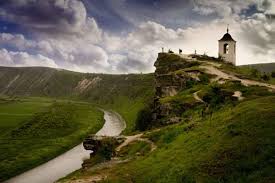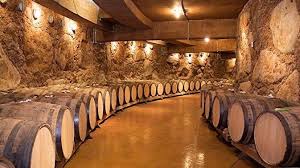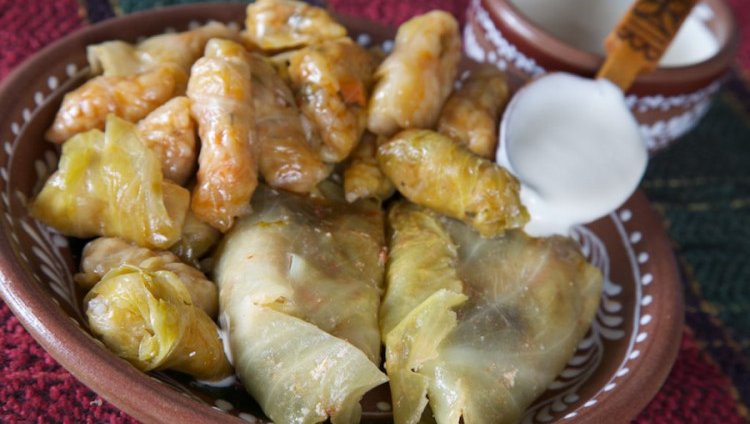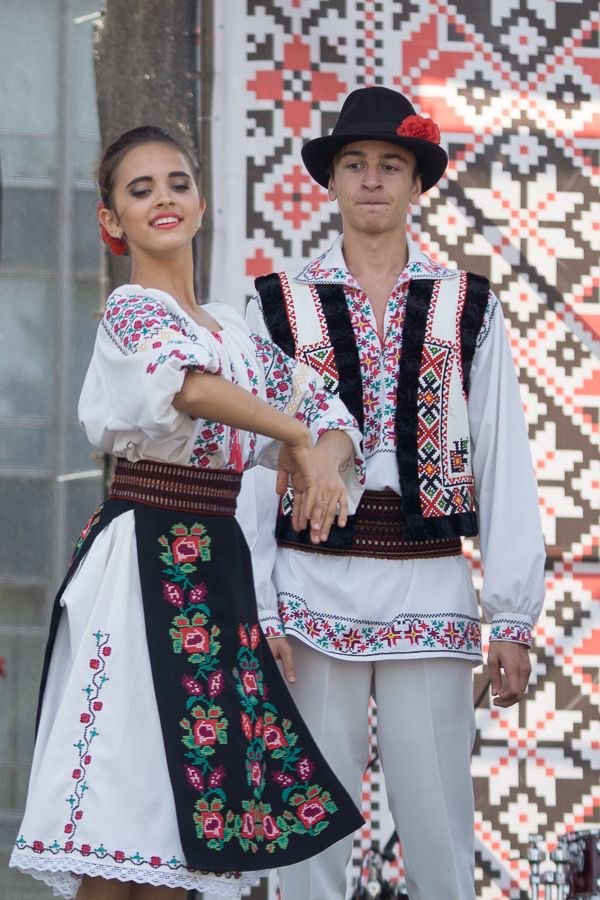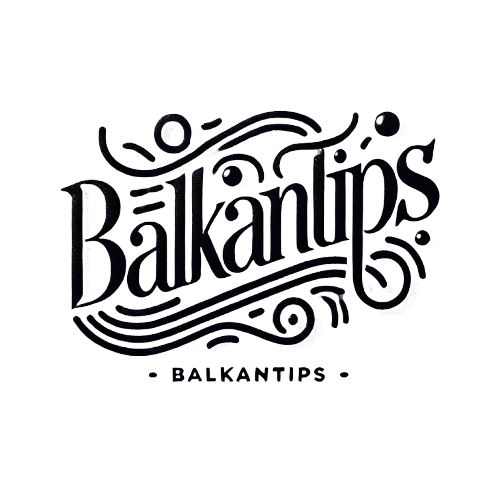

Discover the beauty of Moldova's countryside, rich culture, and renowned wines.
Moldova is a small, landlocked country in Eastern Europe, nestled between Romania and Ukraine. It is known for its rolling hills, picturesque vineyards, and rich cultural heritage. Below are key periods in Moldova's historical development: Ancient Times: The region that is now Moldova was inhabited by the Dacians and Thracians, becoming part of the Roman province of Dacia in the 2nd century AD. Archaeological discoveries highlight this ancient heritage, with remnants of Roman settlements and artifacts. Medieval Moldova: The Principality of Moldavia emerged in the 14th century as a powerful state under rulers like Stephen the Great. This period saw the construction of iconic fortresses such as Soroca Fortress and monasteries like Orheiul Vechi, which remain cultural landmarks today. Ottoman Era: Starting in the 16th century, Moldova fell under Ottoman suzerainty. While the principality retained some autonomy, the region's culture, trade, and architecture were influenced by Ottoman traditions. Russian Influence and 19th Century: In 1812, the eastern part of Moldavia, known as Bessarabia, was annexed by the Russian Empire. This period saw the blending of Romanian traditions with Russian cultural and political influence. World Wars and Soviet Rule: Following World War I, Bessarabia united with Romania. However, in 1940, the Soviet Union annexed the territory, establishing the Moldavian Soviet Socialist Republic. The region experienced significant industrialization, but also faced cultural suppression and political upheaval. Independence: In 1991, Moldova declared independence from the Soviet Union, beginning its journey as a sovereign nation. The transition was marked by economic challenges, cultural revival, and efforts to establish a democratic government. Modern Moldova: Today, Moldova is celebrated for its natural beauty, historic monasteries, and wine tourism. The country is home to the world-famous Cricova and Milestii Mici wine cellars, with vast underground tunnels storing millions of bottles. Orheiul Vechi, a UNESCO World Heritage Site, reflects Moldova's spiritual and historical roots. Moldova's culture is shaped by its Romanian heritage, Slavic influences, and Ottoman legacy, creating a unique blend of traditions. Festivals, traditional cuisine, and folk music are integral to Moldovan identity, making it a fascinating destination in Eastern Europe.
Moldovan culture is a rich tapestry of Romanian, Slavic, and Ottoman influences, characterized by vibrant traditions, music, and cuisine. The country's cultural identity is celebrated through its folklore, hospitality, and colorful festivals.
Moldovan architecture reflects its diverse history, blending medieval fortresses, monasteries, and Soviet-era structures with modern designs. Key styles and examples include:
Moldovan architecture tells the story of its history and resilience, from ancient monasteries and fortresses to the blend of Soviet and modern designs seen today.
Moldova is home to a variety of vibrant festivals and celebrations that reflect its cultural heritage and traditions.
Moldovan cuisine is characterized by its use of fresh, locally sourced ingredients and its blend of Romanian, Russian, and Turkish influences.
The history of Moldova begins in ancient times, with its lands inhabited by the Thracians and Dacians. By the 2nd century AD, the region became part of the Roman province of Dacia. This period saw the introduction of Roman culture, language, and infrastructure, laying the foundation for Moldova's Latin heritage. Archaeological discoveries in Orheiul Vechi and other areas highlight this era's settlements, fortifications, and trade routes.
Evidence of human settlement in Moldova dates back to the Paleolithic era, with artifacts found in caves and along riverbanks. The Neolithic period brought the Cucuteni-Trypillia culture, one of Europe's oldest civilizations, which left behind elaborate pottery, tools, and early agricultural settlements.
The Principality of Moldavia was established in the 14th century under the leadership of Dragoș and later expanded by Bogdan I. Moldova became a powerful state during the reign of Stephen the Great (1457–1504), who successfully defended it against the Ottoman Empire and built fortresses like Soroca Fortress. This period marked Moldova's cultural and architectural golden age, with the construction of churches and monasteries such as Capriana and Putna.
By the mid-16th century, Moldova became a vassal state of the Ottoman Empire. While retaining some autonomy, the principality faced economic decline and political challenges. The Ottomans influenced Moldovan culture, trade, and architecture during this period, particularly in urban centers.
In 1812, the eastern part of Moldavia, known as Bessarabia, was annexed by the Russian Empire following the Russo-Turkish War. This period brought significant changes, including Russification policies and the settlement of ethnic minorities such as Russians, Ukrainians, and Bulgarians. Despite these influences, Moldovan traditions and language persisted.
After World War I, Bessarabia united with Romania in 1918, reflecting the region's shared Romanian heritage. This period saw cultural and economic development, but also tensions with the Soviet Union, which claimed the territory.
In 1940, following the Molotov-Ribbentrop Pact, the Soviet Union annexed Bessarabia and established the Moldavian Soviet Socialist Republic. The region faced widespread deportations, collectivization of agriculture, and suppression of the Romanian language and culture. During World War II, Moldova was heavily impacted by battles between Axis and Soviet forces. Post-war, the Soviet regime promoted industrialization, urbanization, and Russian language policies.
Moldova declared independence from the Soviet Union on August 27, 1991, amidst the collapse of the USSR. The early years of independence were marked by economic challenges, political instability, and the unresolved conflict in the breakaway region of Transnistria. Despite these difficulties, Moldova has worked towards strengthening its economy, democratic institutions, and European integration. Today, Moldova is known for its rich cultural heritage, winemaking traditions, and stunning landmarks such as the Cricova Wine Cellars and Orheiul Vechi. The country continues to balance modernization with the preservation of its unique identity, shaped by centuries of historical influences.
Early Origins of the Moldovan Language
Latin Roots: The Moldovan language, identical to Romanian, traces its origins to the Latin spoken by Roman settlers in the province of Dacia during the 2nd and 3rd centuries AD. The Roman influence played a crucial role in shaping the linguistic identity of the region, which retained its Latin core even after centuries of invasions and migrations.
Slavic and Turkic Influence: Over time, Moldovan evolved with significant influences from Slavic and Turkic languages due to cultural exchanges, trade, and Ottoman rule.
During the medieval period, the Moldovan language retained its Latin roots while adapting to regional influences. The 14th and 15th centuries saw the rise of the Principality of Moldavia, where the Romanian language was used in administration, religion, and literature. Cyrillic script was introduced for religious and official texts, reflecting Slavic influences during this time.
Literary Tradition: By the 16th century, religious texts, chronicles, and laws were written in Old Romanian using the Cyrillic script. This period established the foundation for a distinct Moldovan literary tradition.
Influence of Turkish and Slavic Vocabulary: During the Ottoman period (16th–19th centuries), Moldovan absorbed numerous Turkish loanwords, particularly related to governance, trade, and daily life. The Ottoman presence left a linguistic mark while Moldovans preserved their Latin-based spoken language.
Cultural Exchange: The coexistence of Moldovans with Slavic, Turkic, and other ethnic groups contributed to linguistic diversity, particularly in border regions.
Romanian Linguistic Renaissance: The 19th century marked a significant period of cultural and linguistic revival across Romanian-speaking regions, including Moldova. Efforts to standardize the Romanian language and transition back to the Latin alphabet were central to national identity. Romanian intellectuals emphasized the shared Latin heritage, distinguishing the language from Slavic influences.
Russian Annexation: Following the annexation of Bessarabia by the Russian Empire in 1812, policies aimed at Russification introduced Russian vocabulary and the Cyrillic script in administrative and educational contexts.
Cyrillic Script: During Soviet rule (1940–1991), the Moldovan language was officially recognized as distinct from Romanian and written using a modified Cyrillic script. This policy aimed to sever cultural ties with Romania and emphasize Soviet unity.
Vocabulary and Influences: The Soviet period introduced a significant number of Russian loanwords into Moldovan vocabulary, particularly in areas such as technology, politics, and education. Despite these changes, Moldovan remained a Latin-based language at its core.
Standardization and Return to Latin Script: Following Moldova's independence in 1991, the country officially returned to the Latin script, aligning the Moldovan language with standard Romanian. Today, the Romanian language spoken in Moldova is identical to that spoken in Romania, with minor regional variations in vocabulary and pronunciation.
Contemporary Influences: In modern Moldova, the Romanian language continues to evolve, incorporating loanwords from English and other European languages, particularly in fields such as technology, media, and business.
Phonology: The Moldovan (Romanian) language features a phonetic system with clear vowel sounds and soft consonants, characteristic of Romance languages.
Grammar: Romanian, including its Moldovan variety, is highly inflected, with nouns, pronouns, and adjectives changing forms based on case, number, and gender. It also retains a rich system of verb conjugation, including moods and tenses.
Vocabulary: The vocabulary is predominantly Latin in origin, enriched by Slavic, Turkish, and more recently, Russian and English loanwords. Regional dialects, particularly in rural areas, contribute to linguistic diversity.
The Romanian language is a vital aspect of Moldova's cultural and national identity. Its preservation and promotion are central to the country's heritage, with folk songs, poetry, and literature playing key roles in expressing Moldovan traditions and values. Writers such as Grigore Vieru and Ion Creangă have contributed significantly to Moldova's literary landscape, celebrating the beauty of the Romanian language.
